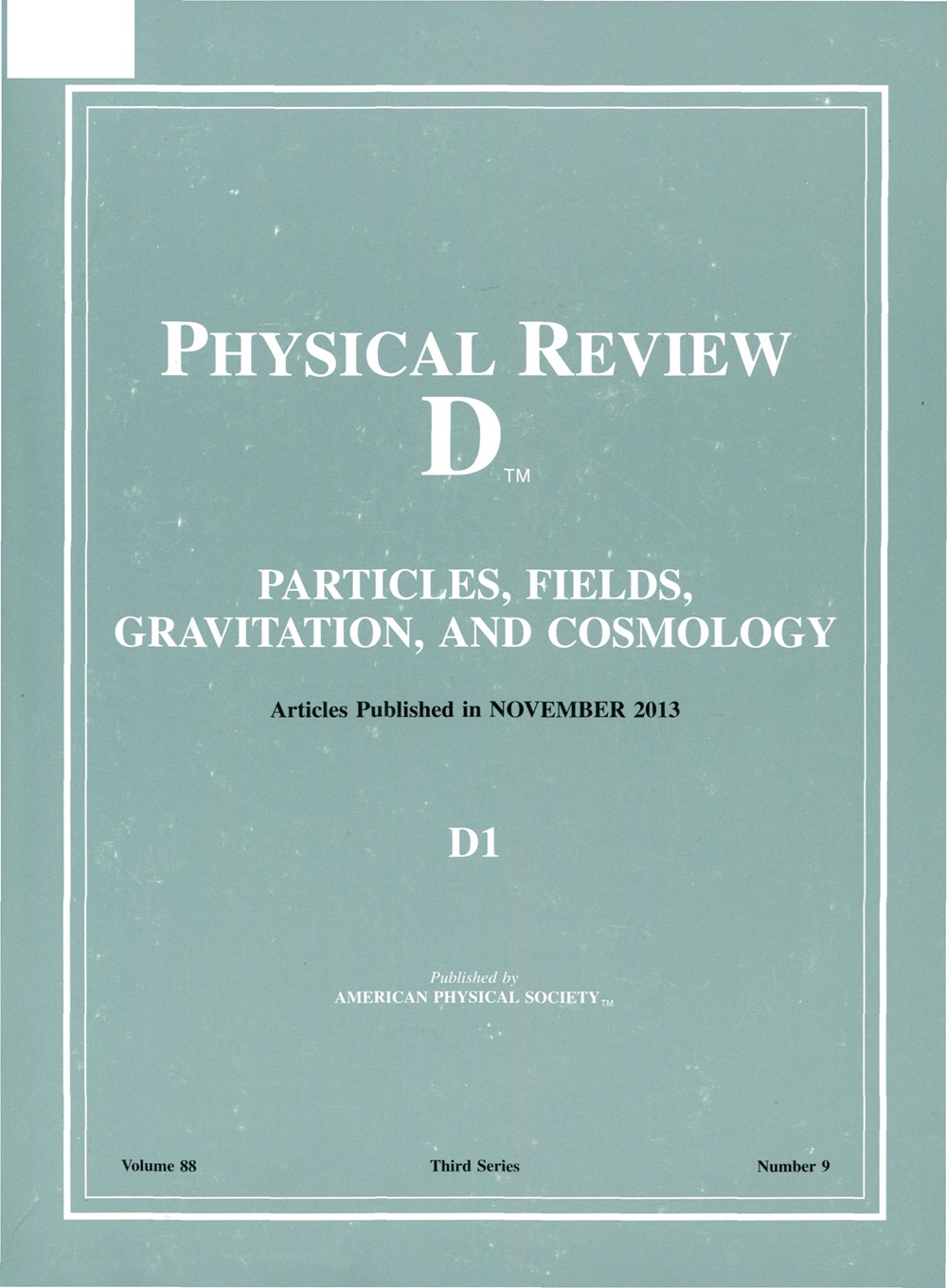Angular distribution study for high mass dimuon pairs in CMS open 2012 data and for mono- Z′ model
IF 5.3
2区 物理与天体物理
Q1 Physics and Astronomy
引用次数: 0
Abstract
This analysis uses the Compact Muon Solenoid (CMS) open data to study the angular distribution of high mass dimuon pairs produced during proton-proton interaction at a center of mass energy of 8 TeV. The study uses the cosθCS variable defined in the Collins-Soper frame. In the Standard Model (SM), the production of high mass dimuon pairs is dominated by the Drell-Yan process, which exhibits a strong forward-backward asymmetry. However, many scenarios beyond the SM predict different shapes for theCMS open 2012数据和mono- Z '模型中高质量量子对的角分布研究
本分析使用紧凑介子螺线管(CMS)开放数据,研究在8tev质能中心质子-质子相互作用过程中产生的高质量介子对的角分布。本研究使用Collins-Soper框架中定义的cost θ cs变量。在标准模型(SM)中,高质量子子对的产生主要是由Drell-Yan过程主导的,该过程表现出强烈的前后不对称性。然而,在SM之外的许多情景预测了cost θ cs分布的不同形状。在SM之外的额外事件中,可以使用角分布来区分这些模型。mono-Z模型用于解释数据,没有观察到与SM的偏差。2025年由美国物理学会出版
本文章由计算机程序翻译,如有差异,请以英文原文为准。
求助全文
约1分钟内获得全文
求助全文
来源期刊

Physical Review D
物理-天文与天体物理
CiteScore
9.20
自引率
36.00%
发文量
0
审稿时长
2 months
期刊介绍:
Physical Review D (PRD) is a leading journal in elementary particle physics, field theory, gravitation, and cosmology and is one of the top-cited journals in high-energy physics.
PRD covers experimental and theoretical results in all aspects of particle physics, field theory, gravitation and cosmology, including:
Particle physics experiments,
Electroweak interactions,
Strong interactions,
Lattice field theories, lattice QCD,
Beyond the standard model physics,
Phenomenological aspects of field theory, general methods,
Gravity, cosmology, cosmic rays,
Astrophysics and astroparticle physics,
General relativity,
Formal aspects of field theory, field theory in curved space,
String theory, quantum gravity, gauge/gravity duality.
 求助内容:
求助内容: 应助结果提醒方式:
应助结果提醒方式:


